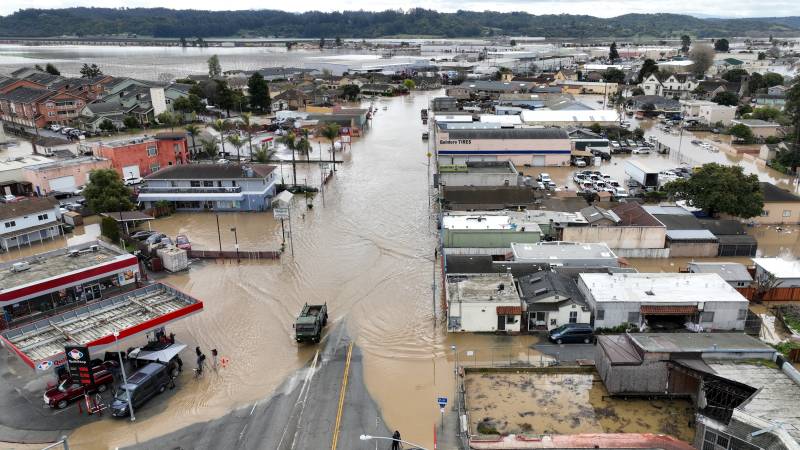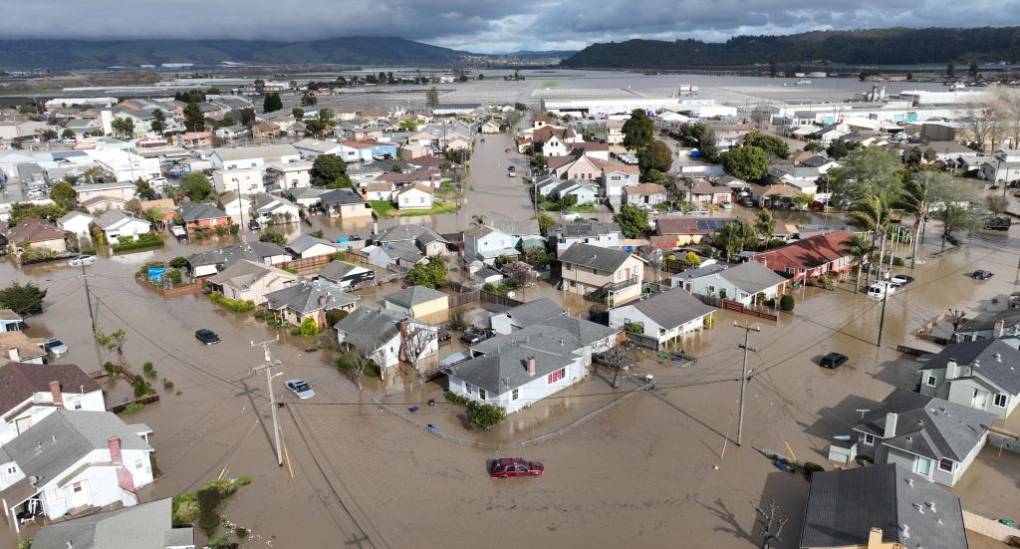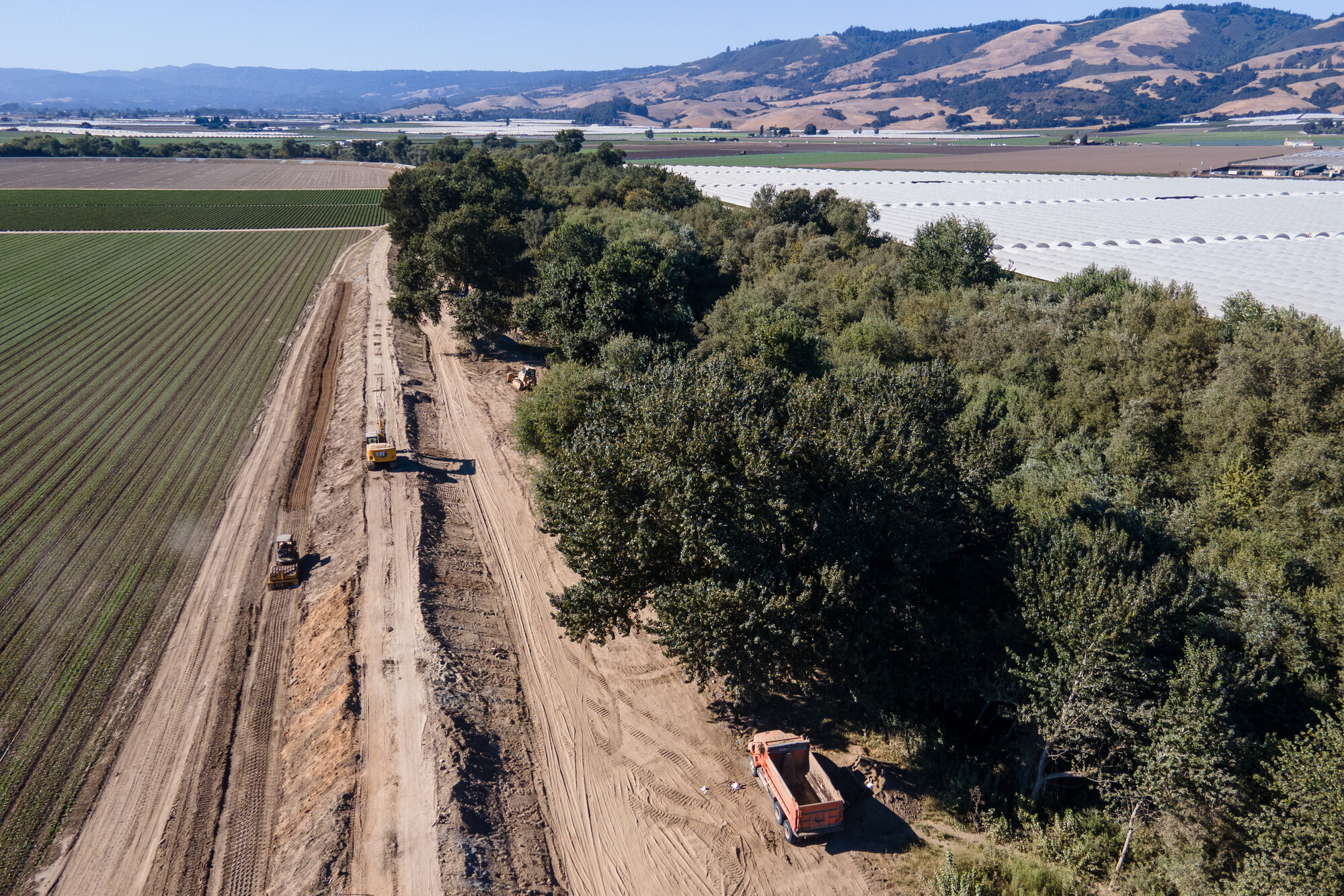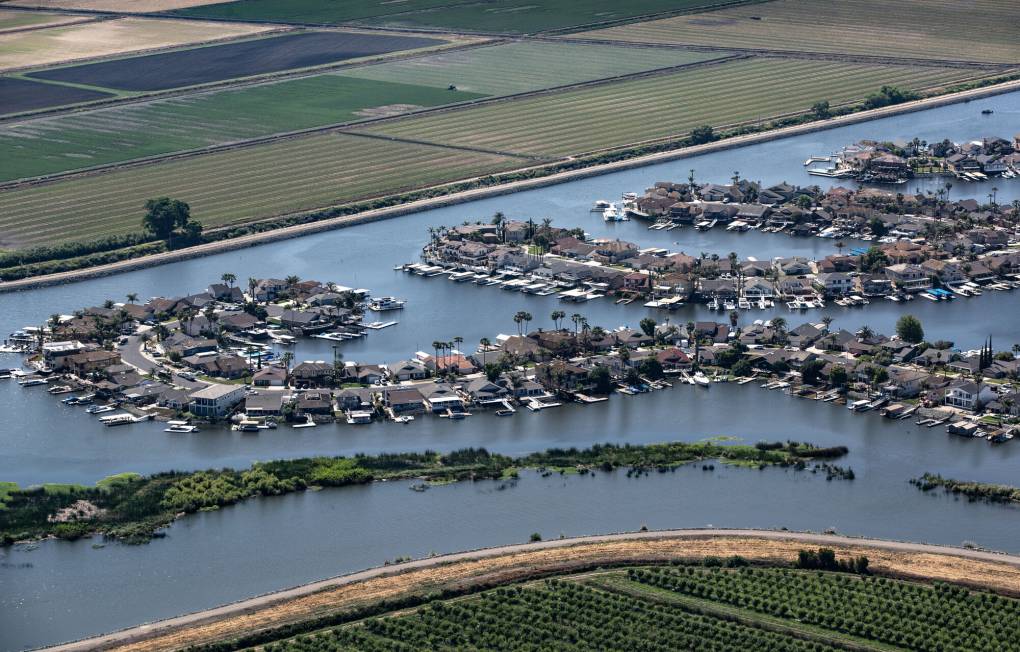First, there was President Trump’s executive order to release billions of gallons of water from two reservoirs in the Central Valley, a move the Feds walked back after farmers and water experts decried it as wasteful, ill-conceived — and an unnecessary risk factor for levees in the region.
The mandate, said Nicholas Pinter, a professor of applied geoscience at UC Davis who studies California’s levees, amounted to “hydrologic insanity.”
“The volume they were initially starting to release and the lack of warning to local officials — it’s hard to characterize it as anything but insane,” he said.
Then came this week’s atmospheric rivers, which keep people like Pinter on watch during California’s rainy season.
That’s because the condition of California’s levees is, by and large, already precarious. In its 2019 infrastructure report card, the American Society of Civil Engineers gave the state’s levees a ‘D,’ citing that despite significant investments, much more work is needed to rehabilitate and improve them.
With more rain in the forecast, here’s what to know about California’s levees:




